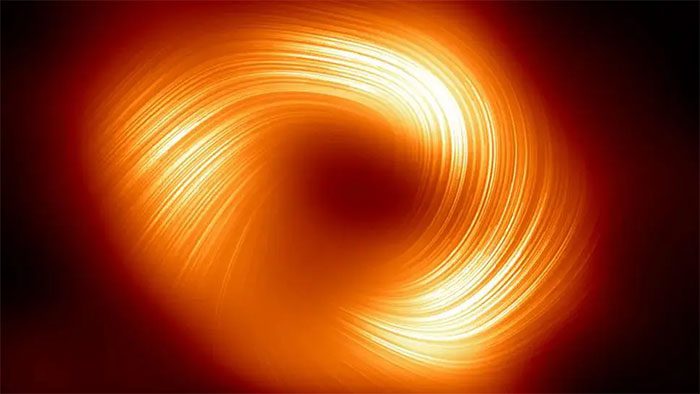New Images Suggest the Supermassive Black Hole Sagittarius A* May Not Be “Asleep.”
Sagittarius A* is the supermassive black hole located at the center of the Milky Way galaxy, the galaxy that Earth inhabits.
Unlike all previous images, the new images captured by the Event Horizon Telescope (EHT)—a “virtual telescope” created by a network of radio observatories scattered around the globe—were taken using polarized light.

Latest image of the supermassive black hole Sagittarius A* – (Image: EHT).
Polarized light is a type of light that consists of waves oscillating in a single plane, which the human eye cannot distinguish from other types of light, but telescopes can.
Material swirling around the event horizon of the black hole—which is the region where everything, including light, is affected by the black hole’s gravitational pull—emits a significant amount of polarized light, making it stand out in the new images.
This light aligns along magnetic field lines, creating an image resembling a vortex of light enveloping the area around the supermassive Sagittarius A*.
This image indicates something remarkable: even though it is in a quiescent state after a period of intense activity, this black hole is still alive, still awake in some sense.
It is continuously emitting jets, shooting streams of superheated material throughout the galaxy.
However, there’s no need to worry, as these “death rays” are not powerful enough to reach Earth, which is situated in a star system at the edge of the galaxy.
The new images also reveal that the magnetic field of the Sagittarius A* supermassive black hole is stronger and more complex than previously thought. Its magnetic field closely resembles that of M87*, another supermassive black hole that is 1,000 times more massive than Sagittarius A* and located 53 million light-years away from us.





















































